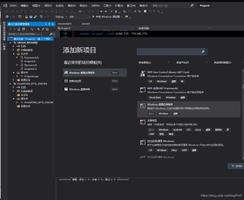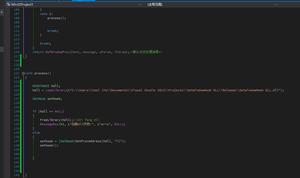Win32 API函数以编程方式启用/禁用设备
我正在编写一个小型C#应用程序,以在检测到其他鼠标设备时禁用设备(我的笔记本电脑触摸板),并在未检测到鼠标时再次启用触摸板。我什至不能在设备管理器中禁用触摸板(它在默认的鼠标类驱动程序上运行)。
我正在开发设备驱动程序,因此我想也许可以编写一个小的过滤器驱动程序,该驱动程序仅接受IOCTL来启用和禁用在设备堆栈上传递鼠标事件消息,并通过原始PDO从用户模式获取消息。但是,我问了这个问题,有人建议我可以通过 SetupDi .. 函数在用户模式下执行此操作。那真的很好,因为这种原始的PDO通信方法是可以使用的PITA。
我以前只使用过 SetupDiGetClassDevs ,而且它们太多了,能否有人对Win32
API的这一部分有更多的经验,可以快速告诉我应该叫什么来停止/禁用鼠标设备或其接口,或者是否有。在框架的黑暗角落中的某个地方可以做到这一点(也许在WMI中?)。
我弄清楚了如何使用过滤器驱动程序来完成此工作,并在最初的问题上发布了我的操作方法。我仍然想知道是否可以直接从Win32启用或禁用设备,如果可以,如何启用-因此我将保留此问题。
回答:
您可以使用SetupDi API从Win32(因此可以通过P / Invoke从C#)启用/禁用设备,但并非所有设备都以此方式“禁用”。
您尝试从Win32(或WMI或调用SetupDi *系列功能的任何其他API)禁用触摸板时会遇到的问题是,大多数带有触摸板的笔记本电脑(默认为PS /
2个兼容的鼠标”)不支持使用SetupDi API禁用。我怀疑这可能是因为使用PS / 2连接器的实际旧鼠标如果没有安装硬件就无法热拆卸。
要验证您不能禁用它,请进入“设备管理器”并右键单击鼠标驱动程序。如果看到禁用选项,则可以使用SetupDi禁用它。如果没有禁用选项,那么您不走运…欢迎来到IOCTL领域!
如果 确实 看到禁用选项,那么下面的代码(从我在这里找到的VB示例移植到C#)应该可以禁用并重新启用设备。
这是调用该库的代码:
public static void EnableMouse(bool enable) {
// every type of device has a hard-coded GUID, this is the one for mice
Guid mouseGuid = new Guid("{4d36e96f-e325-11ce-bfc1-08002be10318}");
// get this from the properties dialog box of this device in Device Manager
string instancePath = @"ACPI\PNP0F03\4&3688D3F&0";
DeviceHelper.SetDeviceEnabled(mouseGuid, instancePath, enable);
}
这是图书馆本身,改编自这里。
using System;using System.Text;
using System.Collections.Generic;
using DisableDevice;
using System.Runtime.InteropServices;
using System.ComponentModel;
using Microsoft.Win32.SafeHandles;
using System.Security;
using System.Runtime.ConstrainedExecution;
using System.Management;
namespace DisableDevice
{
[Flags()]
internal enum SetupDiGetClassDevsFlags
{
Default = 1,
Present = 2,
AllClasses = 4,
Profile = 8,
DeviceInterface = (int)0x10
}
internal enum DiFunction
{
SelectDevice = 1,
InstallDevice = 2,
AssignResources = 3,
Properties = 4,
Remove = 5,
FirstTimeSetup = 6,
FoundDevice = 7,
SelectClassDrivers = 8,
ValidateClassDrivers = 9,
InstallClassDrivers = (int)0xa,
CalcDiskSpace = (int)0xb,
DestroyPrivateData = (int)0xc,
ValidateDriver = (int)0xd,
Detect = (int)0xf,
InstallWizard = (int)0x10,
DestroyWizardData = (int)0x11,
PropertyChange = (int)0x12,
EnableClass = (int)0x13,
DetectVerify = (int)0x14,
InstallDeviceFiles = (int)0x15,
UnRemove = (int)0x16,
SelectBestCompatDrv = (int)0x17,
AllowInstall = (int)0x18,
RegisterDevice = (int)0x19,
NewDeviceWizardPreSelect = (int)0x1a,
NewDeviceWizardSelect = (int)0x1b,
NewDeviceWizardPreAnalyze = (int)0x1c,
NewDeviceWizardPostAnalyze = (int)0x1d,
NewDeviceWizardFinishInstall = (int)0x1e,
Unused1 = (int)0x1f,
InstallInterfaces = (int)0x20,
DetectCancel = (int)0x21,
RegisterCoInstallers = (int)0x22,
AddPropertyPageAdvanced = (int)0x23,
AddPropertyPageBasic = (int)0x24,
Reserved1 = (int)0x25,
Troubleshooter = (int)0x26,
PowerMessageWake = (int)0x27,
AddRemotePropertyPageAdvanced = (int)0x28,
UpdateDriverUI = (int)0x29,
Reserved2 = (int)0x30
}
internal enum StateChangeAction
{
Enable = 1,
Disable = 2,
PropChange = 3,
Start = 4,
Stop = 5
}
[Flags()]
internal enum Scopes
{
Global = 1,
ConfigSpecific = 2,
ConfigGeneral = 4
}
internal enum SetupApiError
{
NoAssociatedClass = unchecked((int)0xe0000200),
ClassMismatch = unchecked((int)0xe0000201),
DuplicateFound = unchecked((int)0xe0000202),
NoDriverSelected = unchecked((int)0xe0000203),
KeyDoesNotExist = unchecked((int)0xe0000204),
InvalidDevinstName = unchecked((int)0xe0000205),
InvalidClass = unchecked((int)0xe0000206),
DevinstAlreadyExists = unchecked((int)0xe0000207),
DevinfoNotRegistered = unchecked((int)0xe0000208),
InvalidRegProperty = unchecked((int)0xe0000209),
NoInf = unchecked((int)0xe000020a),
NoSuchHDevinst = unchecked((int)0xe000020b),
CantLoadClassIcon = unchecked((int)0xe000020c),
InvalidClassInstaller = unchecked((int)0xe000020d),
DiDoDefault = unchecked((int)0xe000020e),
DiNoFileCopy = unchecked((int)0xe000020f),
InvalidHwProfile = unchecked((int)0xe0000210),
NoDeviceSelected = unchecked((int)0xe0000211),
DevinfolistLocked = unchecked((int)0xe0000212),
DevinfodataLocked = unchecked((int)0xe0000213),
DiBadPath = unchecked((int)0xe0000214),
NoClassInstallParams = unchecked((int)0xe0000215),
FileQueueLocked = unchecked((int)0xe0000216),
BadServiceInstallSect = unchecked((int)0xe0000217),
NoClassDriverList = unchecked((int)0xe0000218),
NoAssociatedService = unchecked((int)0xe0000219),
NoDefaultDeviceInterface = unchecked((int)0xe000021a),
DeviceInterfaceActive = unchecked((int)0xe000021b),
DeviceInterfaceRemoved = unchecked((int)0xe000021c),
BadInterfaceInstallSect = unchecked((int)0xe000021d),
NoSuchInterfaceClass = unchecked((int)0xe000021e),
InvalidReferenceString = unchecked((int)0xe000021f),
InvalidMachineName = unchecked((int)0xe0000220),
RemoteCommFailure = unchecked((int)0xe0000221),
MachineUnavailable = unchecked((int)0xe0000222),
NoConfigMgrServices = unchecked((int)0xe0000223),
InvalidPropPageProvider = unchecked((int)0xe0000224),
NoSuchDeviceInterface = unchecked((int)0xe0000225),
DiPostProcessingRequired = unchecked((int)0xe0000226),
InvalidCOInstaller = unchecked((int)0xe0000227),
NoCompatDrivers = unchecked((int)0xe0000228),
NoDeviceIcon = unchecked((int)0xe0000229),
InvalidInfLogConfig = unchecked((int)0xe000022a),
DiDontInstall = unchecked((int)0xe000022b),
InvalidFilterDriver = unchecked((int)0xe000022c),
NonWindowsNTDriver = unchecked((int)0xe000022d),
NonWindowsDriver = unchecked((int)0xe000022e),
NoCatalogForOemInf = unchecked((int)0xe000022f),
DevInstallQueueNonNative = unchecked((int)0xe0000230),
NotDisableable = unchecked((int)0xe0000231),
CantRemoveDevinst = unchecked((int)0xe0000232),
InvalidTarget = unchecked((int)0xe0000233),
DriverNonNative = unchecked((int)0xe0000234),
InWow64 = unchecked((int)0xe0000235),
SetSystemRestorePoint = unchecked((int)0xe0000236),
IncorrectlyCopiedInf = unchecked((int)0xe0000237),
SceDisabled = unchecked((int)0xe0000238),
UnknownException = unchecked((int)0xe0000239),
PnpRegistryError = unchecked((int)0xe000023a),
RemoteRequestUnsupported = unchecked((int)0xe000023b),
NotAnInstalledOemInf = unchecked((int)0xe000023c),
InfInUseByDevices = unchecked((int)0xe000023d),
DiFunctionObsolete = unchecked((int)0xe000023e),
NoAuthenticodeCatalog = unchecked((int)0xe000023f),
AuthenticodeDisallowed = unchecked((int)0xe0000240),
AuthenticodeTrustedPublisher = unchecked((int)0xe0000241),
AuthenticodeTrustNotEstablished = unchecked((int)0xe0000242),
AuthenticodePublisherNotTrusted = unchecked((int)0xe0000243),
SignatureOSAttributeMismatch = unchecked((int)0xe0000244),
OnlyValidateViaAuthenticode = unchecked((int)0xe0000245)
}
[StructLayout(LayoutKind.Sequential)]
internal struct DeviceInfoData
{
public int Size;
public Guid ClassGuid;
public int DevInst;
public IntPtr Reserved;
}
[StructLayout(LayoutKind.Sequential)]
internal struct PropertyChangeParameters
{
public int Size;
// part of header. It's flattened out into 1 structure.
public DiFunction DiFunction;
public StateChangeAction StateChange;
public Scopes Scope;
public int HwProfile;
}
internal class NativeMethods
{
private const string setupapi = "setupapi.dll";
private NativeMethods()
{
}
[DllImport(setupapi, CallingConvention = CallingConvention.Winapi, SetLastError = true)]
[return: MarshalAs(UnmanagedType.Bool)]
public static extern bool SetupDiCallClassInstaller(DiFunction installFunction, SafeDeviceInfoSetHandle deviceInfoSet, [In()]
ref DeviceInfoData deviceInfoData);
[DllImport(setupapi, CallingConvention = CallingConvention.Winapi, SetLastError = true)]
[return: MarshalAs(UnmanagedType.Bool)]
public static extern bool SetupDiEnumDeviceInfo(SafeDeviceInfoSetHandle deviceInfoSet, int memberIndex, ref DeviceInfoData deviceInfoData);
[DllImport(setupapi, CallingConvention = CallingConvention.Winapi, CharSet = CharSet.Unicode, SetLastError = true)]
public static extern SafeDeviceInfoSetHandle SetupDiGetClassDevs([In()]
ref Guid classGuid, [MarshalAs(UnmanagedType.LPWStr)]
string enumerator, IntPtr hwndParent, SetupDiGetClassDevsFlags flags);
/*
[DllImport(setupapi, CallingConvention = CallingConvention.Winapi, CharSet = CharSet.Unicode, SetLastError = true)]
[return: MarshalAs(UnmanagedType.Bool)]
public static extern bool SetupDiGetDeviceInstanceId(SafeDeviceInfoSetHandle deviceInfoSet, [In()]
ref DeviceInfoData did, [MarshalAs(UnmanagedType.LPTStr)]
StringBuilder deviceInstanceId, int deviceInstanceIdSize, [Out()]
ref int requiredSize);
*/
[DllImport("setupapi.dll", SetLastError = true, CharSet = CharSet.Auto)]
[return: MarshalAs(UnmanagedType.Bool)]
public static extern bool SetupDiGetDeviceInstanceId(
IntPtr DeviceInfoSet,
ref DeviceInfoData did,
[MarshalAs(UnmanagedType.LPTStr)] StringBuilder DeviceInstanceId,
int DeviceInstanceIdSize,
out int RequiredSize
);
[SuppressUnmanagedCodeSecurity()]
[ReliabilityContract(Consistency.WillNotCorruptState, Cer.Success)]
[DllImport(setupapi, CallingConvention = CallingConvention.Winapi, SetLastError = true)]
[return: MarshalAs(UnmanagedType.Bool)]
public static extern bool SetupDiDestroyDeviceInfoList(IntPtr deviceInfoSet);
[DllImport(setupapi, CallingConvention = CallingConvention.Winapi, SetLastError = true)]
[return: MarshalAs(UnmanagedType.Bool)]
public static extern bool SetupDiSetClassInstallParams(SafeDeviceInfoSetHandle deviceInfoSet, [In()]
ref DeviceInfoData deviceInfoData, [In()]
ref PropertyChangeParameters classInstallParams, int classInstallParamsSize);
}
internal class SafeDeviceInfoSetHandle : SafeHandleZeroOrMinusOneIsInvalid
{
public SafeDeviceInfoSetHandle()
: base(true)
{
}
protected override bool ReleaseHandle()
{
return NativeMethods.SetupDiDestroyDeviceInfoList(this.handle);
}
}
public sealed class DeviceHelper
{
private DeviceHelper()
{
}
/// <summary>
/// Enable or disable a device.
/// </summary>
/// <param name="classGuid">The class guid of the device. Available in the device manager.</param>
/// <param name="instanceId">The device instance id of the device. Available in the device manager.</param>
/// <param name="enable">True to enable, False to disable.</param>
/// <remarks>Will throw an exception if the device is not Disableable.</remarks>
public static void SetDeviceEnabled(Guid classGuid, string instanceId, bool enable)
{
SafeDeviceInfoSetHandle diSetHandle = null;
try
{
// Get the handle to a device information set for all devices matching classGuid that are present on the
// system.
diSetHandle = NativeMethods.SetupDiGetClassDevs(ref classGuid, null, IntPtr.Zero, SetupDiGetClassDevsFlags.Present);
// Get the device information data for each matching device.
DeviceInfoData[] diData = GetDeviceInfoData(diSetHandle);
// Find the index of our instance. i.e. the touchpad mouse - I have 3 mice attached...
int index = GetIndexOfInstance(diSetHandle, diData, instanceId);
// Disable...
EnableDevice(diSetHandle, diData[index], enable);
}
finally
{
if (diSetHandle != null)
{
if (diSetHandle.IsClosed == false)
{
diSetHandle.Close();
}
diSetHandle.Dispose();
}
}
}
private static DeviceInfoData[] GetDeviceInfoData(SafeDeviceInfoSetHandle handle)
{
List<DeviceInfoData> data = new List<DeviceInfoData>();
DeviceInfoData did = new DeviceInfoData();
int didSize = Marshal.SizeOf(did);
did.Size = didSize;
int index = 0;
while (NativeMethods.SetupDiEnumDeviceInfo(handle, index, ref did))
{
data.Add(did);
index += 1;
did = new DeviceInfoData();
did.Size = didSize;
}
return data.ToArray();
}
// Find the index of the particular DeviceInfoData for the instanceId.
private static int GetIndexOfInstance(SafeDeviceInfoSetHandle handle, DeviceInfoData[] diData, string instanceId)
{
const int ERROR_INSUFFICIENT_BUFFER = 122;
for (int index = 0; index <= diData.Length - 1; index++)
{
StringBuilder sb = new StringBuilder(1);
int requiredSize = 0;
bool result = NativeMethods.SetupDiGetDeviceInstanceId(handle.DangerousGetHandle(), ref diData[index], sb, sb.Capacity, out requiredSize);
if (result == false && Marshal.GetLastWin32Error() == ERROR_INSUFFICIENT_BUFFER)
{
sb.Capacity = requiredSize;
result = NativeMethods.SetupDiGetDeviceInstanceId(handle.DangerousGetHandle(), ref diData[index], sb, sb.Capacity, out requiredSize);
}
if (result == false)
throw new Win32Exception();
if (instanceId.Equals(sb.ToString()))
{
return index;
}
}
// not found
return -1;
}
// enable/disable...
private static void EnableDevice(SafeDeviceInfoSetHandle handle, DeviceInfoData diData, bool enable)
{
PropertyChangeParameters @params = new PropertyChangeParameters();
// The size is just the size of the header, but we've flattened the structure.
// The header comprises the first two fields, both integer.
@params.Size = 8;
@params.DiFunction = DiFunction.PropertyChange;
@params.Scope = Scopes.Global;
if (enable)
{
@params.StateChange = StateChangeAction.Enable;
}
else
{
@params.StateChange = StateChangeAction.Disable;
}
bool result = NativeMethods.SetupDiSetClassInstallParams(handle, ref diData, ref @params, Marshal.SizeOf(@params));
if (result == false) throw new Win32Exception();
result = NativeMethods.SetupDiCallClassInstaller(DiFunction.PropertyChange, handle, ref diData);
if (result == false)
{
int err = Marshal.GetLastWin32Error();
if (err == (int)SetupApiError.NotDisableable)
throw new ArgumentException("Device can't be disabled (programmatically or in Device Manager).");
else if (err >= (int)SetupApiError.NoAssociatedClass && err <= (int)SetupApiError.OnlyValidateViaAuthenticode)
throw new Win32Exception("SetupAPI error: " + ((SetupApiError)err).ToString());
else
throw new Win32Exception();
}
}
}
}
请注意,当您在行上收到Index-Out-Of-Bounds异常时int index = GetIndexOfInstance(diSetHandle,
diData, instanceId);,您可能为设备使用了错误的classGuid或错误的instanceId。
还要注意,当您在64位Windows平台上运行此代码时,在构建应用程序时应以64位平台为目标。否则-
例如,在64位Windows平台上将应用程序作为32位进程运行时-您将收到SetupAPI错误InWow64(ERROR_IN_WOW64)。
以64位Windows平台为目标时,您可能还必须对应用程序的其他部分进行更改,例如在进行指针算术时,以防止溢出。
以上是 Win32 API函数以编程方式启用/禁用设备 的全部内容, 来源链接: utcz.com/qa/407708.html






